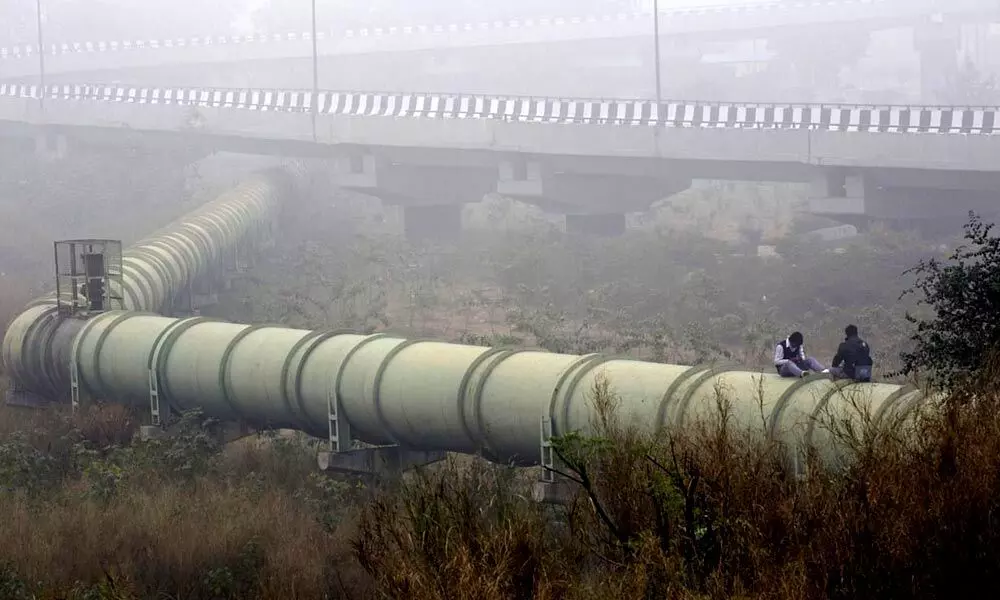Why India should join the race to net zero goal
It’s a challenge, to be sure - but India can and should rise to the task. If it does, it can serve as a model for other developing countries. If India raises its ambitions, it can take its rightful place as a global leader in the fight against climate change
image for illustrative purpose

It's on track to meet its existing climate commitments, but it needs to do more
The Biden administration is soon expected to formally commit the United States to achieving net-zero carbon emissions by the middle of this century. When it does, nine of the world's 10 largest economies will have made that pledge or something like it. The lone holdout - India - should do the same.
Unlike many other governments, India's has generally preferred to under-promise and over-deliver on its climate pledges. The country is on track to meet its previously declared targets of generating 40 per cent of its power from renewable sources and reducing carbon emitted per unit of output 33 per cent to 35 per cent by 2030. But it's declined up to now to set a goal for achieving net-zero, and it's pushing back against international pressure to do so. The reasons for this are familiar and understandable. Most of India's more than 1.3 billion citizens remain desperately poor. If faster progress on climate meant asking them to forgo the fruits of economic development - power, roads, cars, flights, factories - it would be grossly unfair. Developed nations are responsible for the vast majority of historical emissions. If the US and India both meet net-zero targets by 2050, the US will have poured nearly five times as much carbon dioxide into the atmosphere as India.
Yet the case for greater ambition is compelling. It needn't mean diminished growth, correctly measured - and it could very well mean the opposite.
If India continues along its current path, its emissions could more than double by mid-century. The country is already among those most vulnerable to climate change. Melting Himalayan glaciers threaten the country's water supply; rising temperatures and erratic monsoons could devastate crops. Climate-related costs aren't the only danger: Choking air pollution killed nearly 1.7 million Indians in 2019. If the US and European Union decide to impose carbon tariffs, Indian exporters will have to shrink their carbon footprints if they want to compete. Delay will only make the country's transition more expensive and more painful.
In curbing emissions, India has advantages. Most of the factories, buildings, vehicles and power plants its economy will need have yet to be built, so it can avoid locking in inefficient and polluting technologies. India is a world leader in generating cheap power from solar and wind, and it has plenty of scope to expand. A young and entrepreneurial population can help develop clean-energy innovations. Ultimately, according to the International Energy Agency, the savings from reduced oil imports would make up for the costs of the transition.
This isn't to say the task will be easy. It might be harder than for any other major economy. India will need to shift rapidly from fossil fuels to renewables for everything from generating power to electric vehicles to cooking. That will require improving the power grid and expanding storage for wind and solar energy. For sectors such as steelmaking and transportation, hydrogen technology will have to be perfected and scaled up. Buildings and construction will have to be more efficient. Not all emissions can be eliminated, so India will have to plant millions of hectares of trees to create carbon sinks and deploy technologies to capture and store carbon.
A shift on this scale will demand clear and consistent signals from the government. Officials should set a date for peak emissions - preferably by 2030 - as well as sectoral targets for decarbonization. They'll need to devise incentives and create a friendlier business environment for carbon-reducing technologies and processes. The government should seek buy-in from local and state officials, and from all political parties, so policies can be sustained by future administrations. It should consider a formal price for carbon, using the revenues that could generate to support the creation of new clean jobs. And rich nations need to do their part, as well, by transferring technology and providing adequate financing and investment.
It's a challenge, to be sure - but India can and should rise to the task. If it does, it can serve as a model for other developing countries, pioneering the right kind of policies to curtail emissions and improve public health without sacrificing growth. And this stronger commitment would greatly increase pressure on other countries, rich and poor alike, to do better. If India raises its ambitions, it can take its rightful place as a global leader in the fight against climate change. (Bloomberg)

